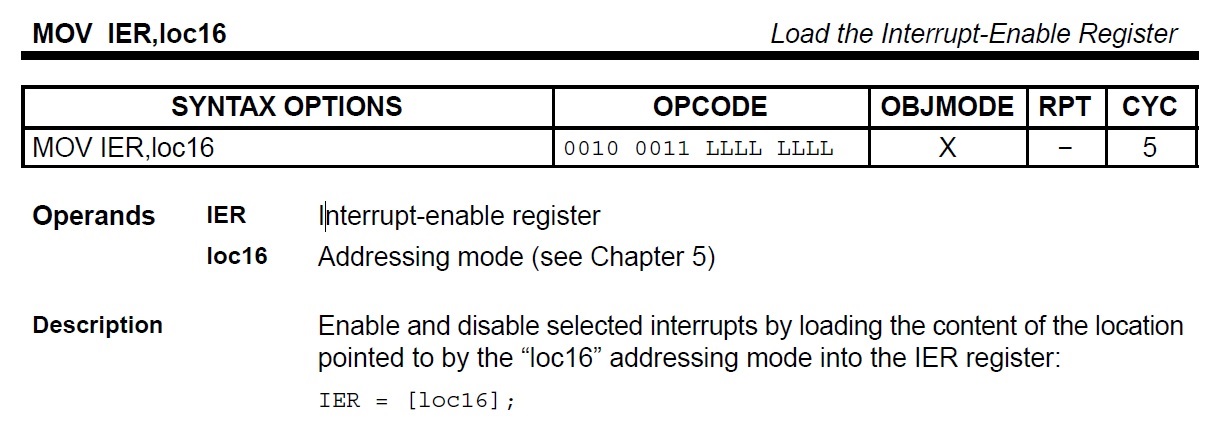Hi,
In the "TMS320x2833x, 2823x System Control and Interrupts" Manual (sprufb0d) it is written that the IER register should be modified with AND and OR instructions. In the online article "Interrupt Nesting on C28x" from TI (processors.wiki.ti.com/.../Interrupt_Nesting_on_C28x) the example does the following:
IER |= 0x002; // Set global priority by adjusting IER
IER &= 0x002;
This complies to the manual but I do not understand why one can not write this as follows:
IER=0x002;
Any special reasons within the CPU why we can not directly write a constant value?
Thanks and best regards,
Patrick


